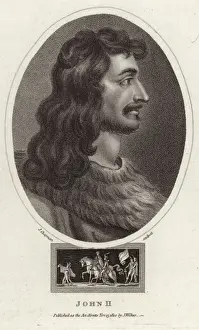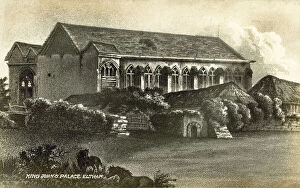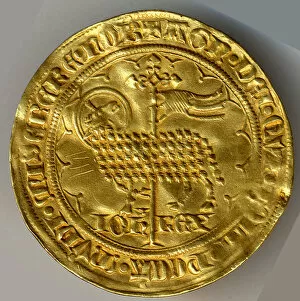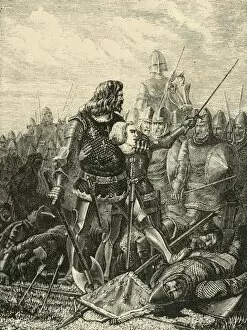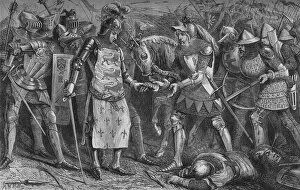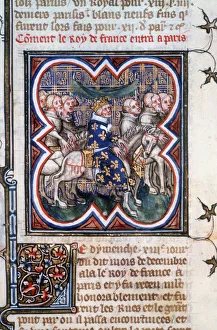King John Ii Of France Collection
"King John II of France: A Captivating Enigma in History" In this captivating engraving, we catch a glimpse of King John II of France, also known as Jean the Good
All Professionally Made to Order for Quick Shipping
"King John II of France: A Captivating Enigma in History" In this captivating engraving, we catch a glimpse of King John II of France, also known as Jean the Good. Known for his valiant efforts and tumultuous reign, he left an indelible mark on French history. The regal aura surrounding him is palpable in this exquisite depiction. One cannot help but be drawn to the grandeur of King John's palace at Eltham. This lithograph transports us back to an era where power and opulence were intertwined seamlessly. It serves as a testament to the splendor that surrounded this enigmatic ruler. The Mouton of Jean the Good, a masterpiece shrouded in mystery with its unknown creator, offers insight into the artistic tastes prevalent during his time. Its intricate details and symbolism leave us pondering over its significance within King John's reign. The Battle of Poitiers looms large in King John's legacy, forever etched into history by various artists throughout centuries. From 1356 to 1890, these depictions capture pivotal moments such as Edward the Black Prince waiting on his prisoner - none other than King John himself - showcasing both triumph and defeat. As we delve deeper into James William Edmund Doyle's artwork from 1864, we witness an intimate scene where The Prince serves King John at table during their captivity together. It humanizes these historical figures and reminds us that even kings are subject to vulnerability. The Surrender of the King at Poitiers resonates strongly through time; it symbolizes not only military defeat but also political upheaval. Whether depicted in 1880 or 1793 by different artists capturing diverse perspectives, it remains a poignant reminder of how one moment can shape nations' destinies. J Chapman's portrayal from 1805 encapsulates the essence of King John II—a man whose rule was marked by complexities yet defined by his unwavering determination.

